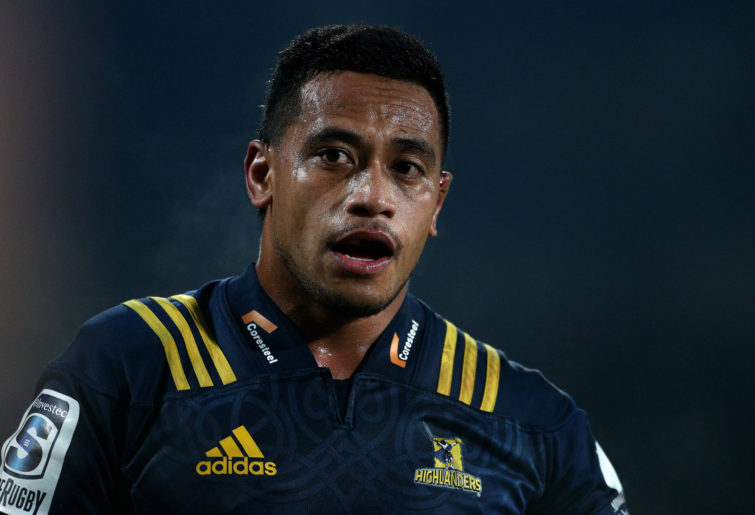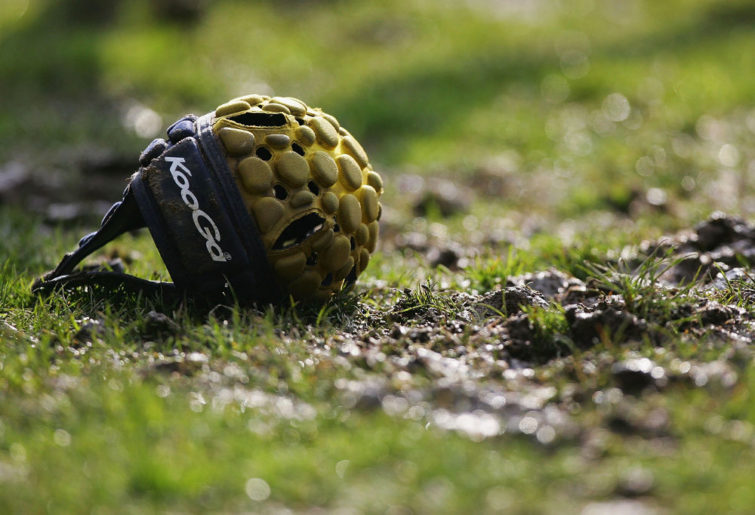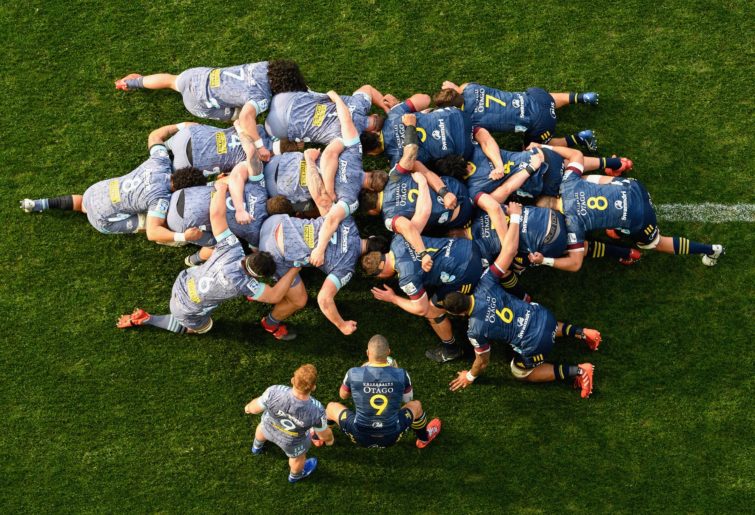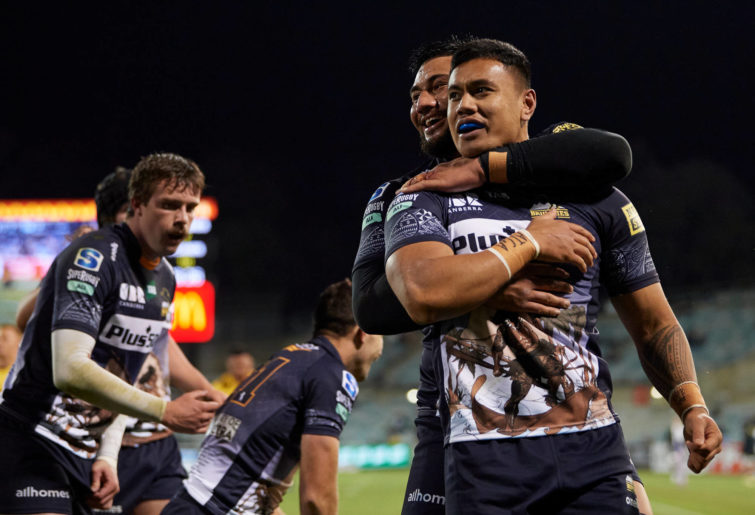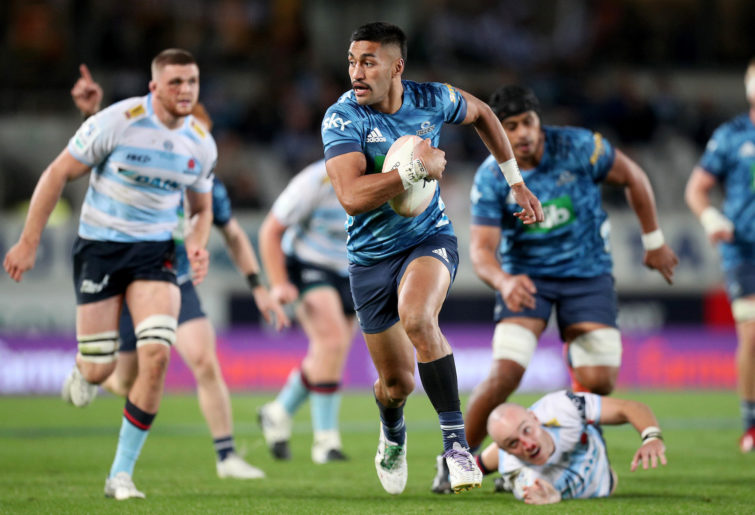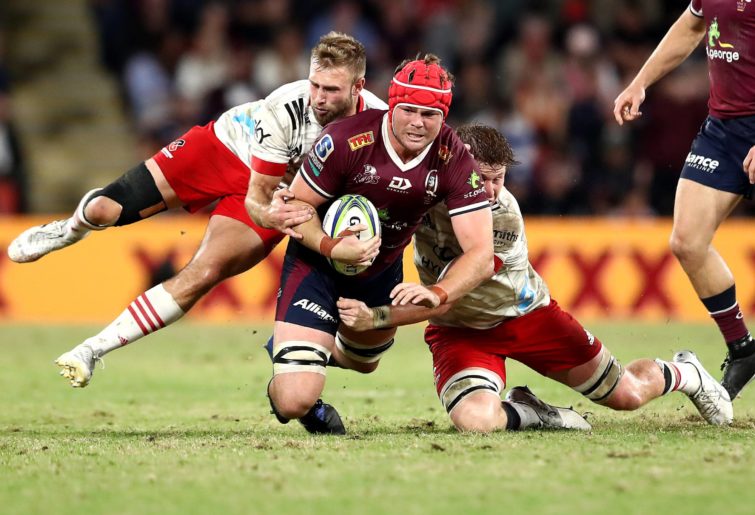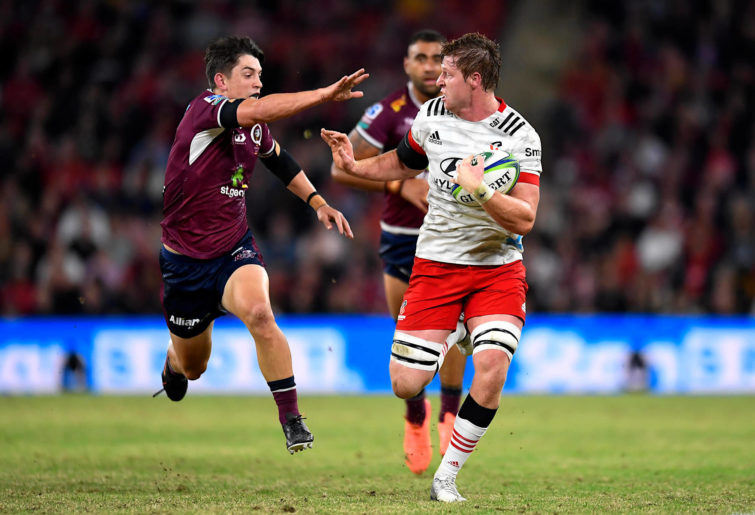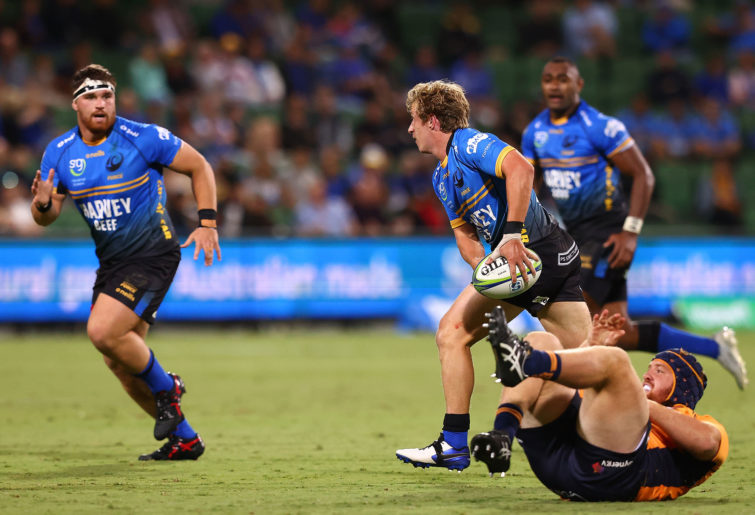It’s the question that just won’t go away: should Australian rugby’s overseas contingent be eligible to play for the Wallabies?
The argument fired up again this week with the announcement of the first Test squad for 2021. Feelings run hot on both sides. Those championing head coach Dave Rennie’s ‘local only’ approach fear a stampede for the exit if eligibility restrictions end.
On the other hand, after a run of less-than-stellar results over the past couple of decades, others believe the Wallabies simply can’t afford to exclude our overseas elite – particularly with players increasingly making the move abroad in their peak years.
Imagine what Rory Arnold, Tolu Latu and Sean McMahon would bring to the Wallabies, they argue. South Africa picked players from wherever and won a World Cup. Why can’t that be us?
Making a choice: Then and now
30 years ago, Wallabies fans lived in fear of the next headline announcing that this rugby star or that emerging talent had signed to play league. It was such a regular occurrence that supporters should have been resigned to it but, every time it happened, it was still a dagger to the heart. At one time, both Michael Lynagh and David Campese were in the sights of league scouts, and only an imminent rugby revolution saved Tim Horan from the dark side.
Would Australia have won the 1991 Rugby World Cup without Lynagh and Campese? No.
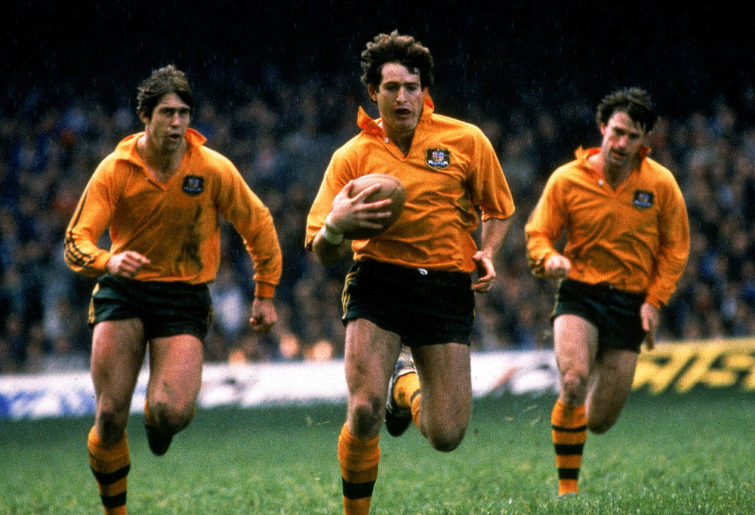
(Getty Images)
Or have brought back Bill in 1999 had Horan defected five years earlier? Almost certainly not.
It’s reasonable to assume that all three feel they made the right decision. None would enjoy quite the status they do today had they left rugby for league.
This, of course, was the amateur era, when rugby players played for love not money – at least in theory.
Now, professional players get to have their cake and eat it too. Those at the top can represent their country and get paid for it. Generations of amateurs must wish they’d been so lucky.
Of course, it’s not money for nothing. Professionalism demands as well as gives, in terms of training time, a demanding travel schedule, marketing and media commitments, not to mention public scrutiny. Still, for many of Australia’s professional rugby players (although not all), it’s a comfortable living.
More Rugby
-
Who gets to wear gold? Why Dave Rennie is right and Marika Koroibete must choose
-
Four more years of Super Rugby? I bloody well hope not!
-
Swinton free to play France after avoiding suspension for Boshier hit
-
Deconstructing the ball runner’s options
-
Wallabies star Kerevi in Tokyo Games squad
Rugby
David versus Goliath
The issue for Australia is that other countries are offering more than a comfortable living; they’re offering small fortunes. Even middle-tier players are often handsomely compensated, and those at the top of their game – such as Melbourne Rebels and Wallabies wing Marika Koroibete, who may be heading to Japan at season’s end – can double their Australian salary to make a million dollars or more a year.
Rennie has made it clear that Rugby Australia cannot compete with these kinds of salaries, but we already knew that. There was a similar tussle for then-Reds captain Samu Kerevi a couple of years ago, and that was before a pandemic exposed and worsened the parlous state of Australian rugby’s finances.
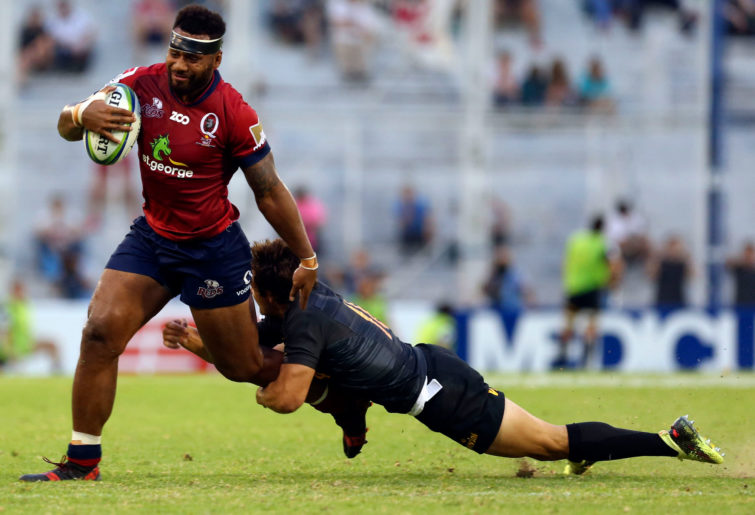
(Photo by Daniel Jayo/Getty Images)
Why on earth Rugby Australia should be expected to compete financially is a mystery. The Japanese Top League sides are the constructs of multinational corporations, such as Panasonic and Toyota. With corporate behemoths behind them, these teams don’t have to sustain themselves. Similarly, the French Top 14 sides and English Premiership teams are often the playthings of wealthy owners.
At the other end of the spectrum, Rugby Australia, and the Australian Super Rugby teams bar the Western Force, are scraping by on broadcast fees, sponsorship money and ticket/merchandise sales. This is David versus Goliath territory.
So why don’t we do as South Africa does and pick our players from anywhere?
Instead of Michael Hooper heading to Japan for five months, he could pack his bags for five years, along with the rest of our top earners, while returning for the approved Test windows. It’s surely an elegant solution that would save Rugby Australia millions each year without compromising the Wallabies.
Gazing into rugby’s crystal ball
The problem with that ‘solution’ is the impact on the quality of our Super Rugby teams with our top players overseas. The problem is the lack of senior players to mentor emerging ones. The problem is the Test coaches’ inability to keep tabs on fitness and form, and the impact on cohesion when the Wallabies come together. The problem is supporters drifting away when players they’ve followed through the pathways disappear. The problem is lost marketing opportunities and fewer sponsors.
Sports opinion delivered daily
function edmWidgetSignupEvent()
window.roarAnalytics.customEvent(
category: 'EDM',
action: 'EDM Signup',
label: `Shortcode Widget`,
);
In short, the problem is the risk of catastrophic damage to our rugby culture.
The Waratahs’ 2021 season painted a stark picture of what a Super team looks like shorn of its top talent and middle tier, reliant largely on journeymen and a few plucky up-and-comers not quite experienced enough to demand the big bikkies overseas (but who will be gone next year or the year after once their stature and price has risen).
Imagine if all five of our Super Rugby teams had a similar composition (and similar results) to the Waratahs. Is that what we want, year after year, a constant merry-go-round of rebuilding, losing our best and brightest just as they approach their peak?

(Photo by Mark Evans/Getty Images)
But onto the impact on Test rugby and, ultimately, Australia’s prospects at the Rugby World Cup.
A multitude of factors go into winning a World Cup. A handful of World XV players, a coaching group able to form a team that’s greater than the sum of its parts, personalities and playing styles gelling, timing and a little bit of luck are just a few.
But my guess is – and it is just a guess – that it would become much harder with our top players based offshore.
Wallabies coaches and medical staff would have little oversight. Players would be less familiar with each other, impacting cohesion. They’d be strangers to the public too, no longer inspiring the same goodwill they once enjoyed. These things matter.
South Africa did it, though
South Africa’s rules relaxed in 2017 to make overseas internationals with 30 Test caps eligible for the Springboks, before restrictions were dropped altogether just a few months before the 2019 Rugby World Cup. 60 per cent of its squad for the tournament was still based in South Africa, so it’s reasonable to theorise that cohesion was still strong.
But what will the impact of a big foreign legion be on the Springboks’ chances of defending their world crown in 2023 – or even on their prospects against the British and Irish Lions this year?
Perhaps, by 2023, all the top South African players will be clustered at Sale and Munster, and cohesion will be just fine. But if your 33-man squad comes from 28 different teams located in seven different countries, they may no longer be speaking the same rugby language. Is the limited time you have together enough to reconnect, or are you now at a distinct disadvantage?
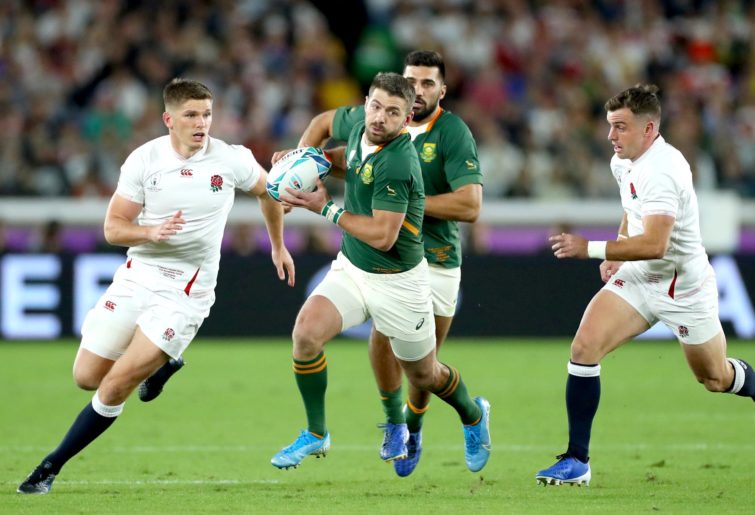
(Photo by Hannah Peters/Getty Images)
Perhaps more important, though, will be the impact on rugby’s place within South African culture. Will it lose its grip on the national psyche? Will the local game become simply a farm league for wealthy overseas juggernauts to plunder? Will kids still aspire to be Springboks?
We simply don’t know. The real effect of changes to eligibility may not be felt for a decade or more. Think of the decision back in 1995 to put Super Rugby on pay TV, and its impact on Australian rugby across a quarter of a century. By the time the true impact of ending eligibility restrictions is known, it may be too late to turn the tide.
Guardians of the game
Rugby is more fragile in Australia than it is in South Africa. Here, it’s a niche sport (albeit one known for punching above its weight) and has to compete with two behemoths in rugby league and AFL. Our unique challenges mean that Australian rugby’s guardians – from the administrators to the players to the fans – must nurture our code with great care.
This is why rugby administrators first moved to give the sport a national footprint. They knew that if they didn’t take the ground others would. As a result, rugby now spans the breadth of our country. It’s an extraordinary feat, one achieved at some cost, admittedly. It places big demands on playing resources while new pathways are established. The politics have been messy, the financial cost near disastrous.
Nevertheless, our youngest team, the Melbourne Rebels, is now ten years old, and the Western Force is 15. In Perth, the Sea of Blue – including cheerleader-in-chief Andrew Forrest – dug in and refused to let the Force die, even when things were at their toughest.
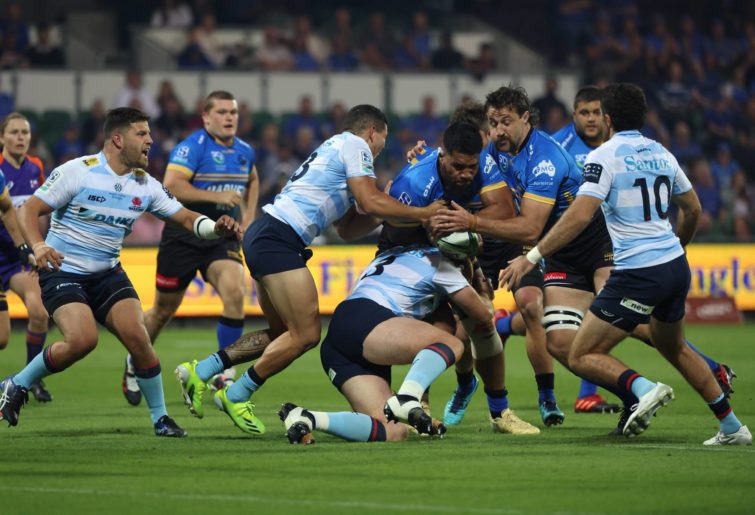
(Photo by Paul Kane/Getty Images)
The Force’s rugby pipeline of homegrown talent has already produced a number of Test-standard players, and in Melbourne the ‘Burn Boys’ are showing the Victorian community what’s possible.
These signs of resilience are significant in Australian rugby’s battle to survive and thrive, but we can’t afford to drop the ball. We need all five Super teams to be strong in order to build awareness, participation and sustainability (not to mention competitiveness at the trans-Tasman level!), just as we need the Wallabies to be competitive, cohesive and strongly supported. This means the best Australian players staying home as much as possible during the peak years of their careers.
There’s some value in short-term overseas stints. Michael Hooper’s low-key sabbatical in Japan will surely have recharged those Energizer batteries, while Matt Philip’s recent French lessons may prove invaluable in the upcoming series against Les Bleus.
Rennie has flagged a place for these kinds of arrangements going forward, for players broadly committed to Australian rugby. Where there’s a benefit for player development, wellbeing and longevity, it’s a pragmatic move.
The ultimate prize
In general, though, Rennie is right to send a strong signal to three-storey Rory and co – indeed, to the entire rugby community – that Australian rugby puts a high value on loyalty. If you want to play for Australia, you must play in Australia.
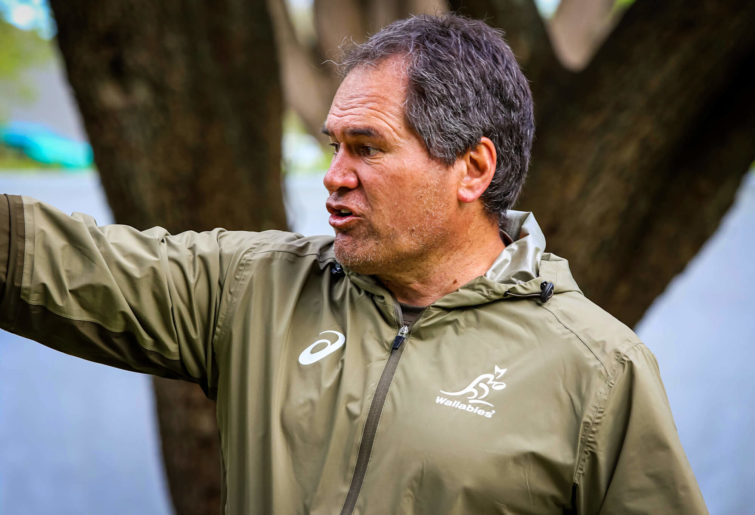
(Andrew Phan/supplied by Rugby Australia)
Of course, when players are loyal and making a financial sacrifice to keep Australian rugby strong, Australian rugby must show loyalty in return. This means providing exciting competitions, world-class coaching and development opportunities, the best medical and welfare support and preparation for life after rugby, as well as the ultimate prize of Test eligibility.
Until Marika Koroibete shows his hand, we won’t know if what Australian rugby offers is enough to keep him here for less money than he’d earn overseas.
Will he want to build a legacy with the Rebels? How badly does he want to win Bledisloes and a World Cup? Does he consider himself part of the fabric of Australian rugby?
His often thrilling performances over the past two years in particular have already repaid Australian rugby’s investment in him. If he chooses to go, it should be with our well wishes.
But before he makes a decision on his future, he might want to speak with Samu Kerevi. In 2019, Samu left for Japan where his brothers were based – and for a financial deal beyond anything the Queensland rugby union and Rugby Australia could offer. It might have seemed a simple decision at the time, a contract that could set up his family for years, if not life.
But anyone who saw Kerevi’s grim expression as Australia raised the Puma trophy following his last game at Suncorp Stadium might have speculated on his feelings. Perhaps they were just end-of-an-era emotions. Or just maybe the true cost of his choice was sinking in.
Wearing Wallaby gold has meaning, more so when you’ve made a sacrifice to do so. Those players from the amateur era who resisted league’s lure were prepared to make that sacrifice. Today’s Wallabies must do likewise.
Original source: https://www.theroar.com.au/2021/06/19/who-gets-to-wear-gold-why-dave-rennie-is-right-and-marika-koroibete-must-choose/
https://therugbystore.com.au/who-gets-to-wear-gold-why-dave-rennie-is-right-and-marika-koroibete-must-choose/
